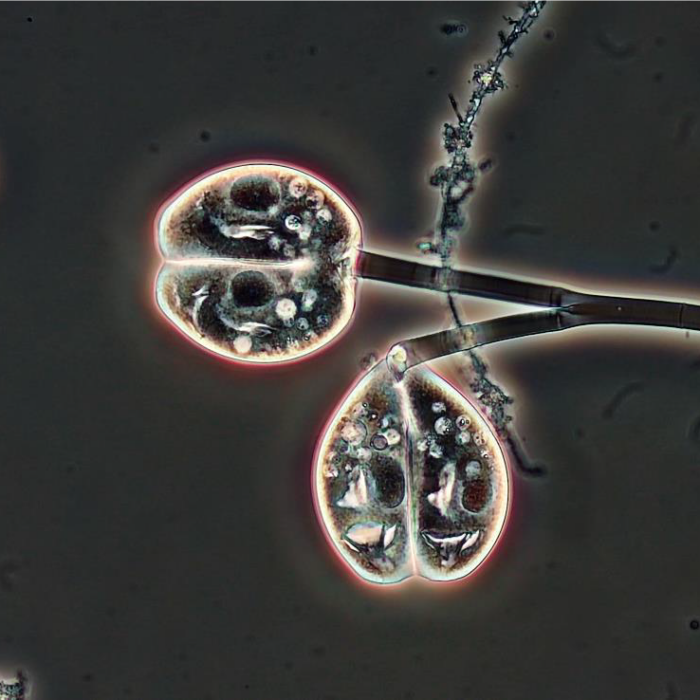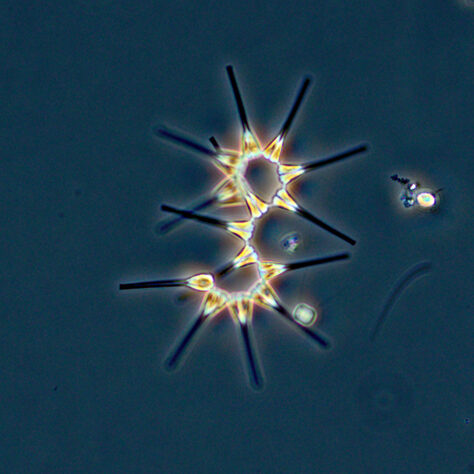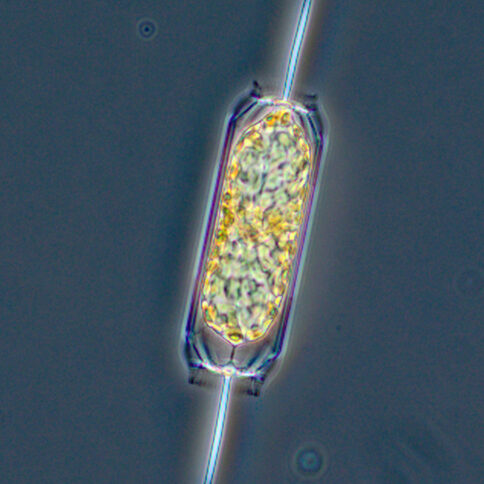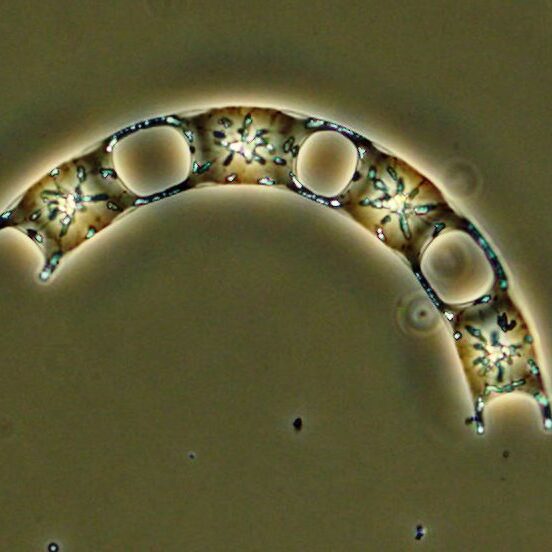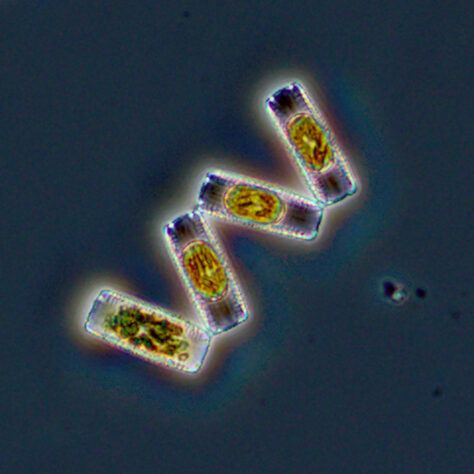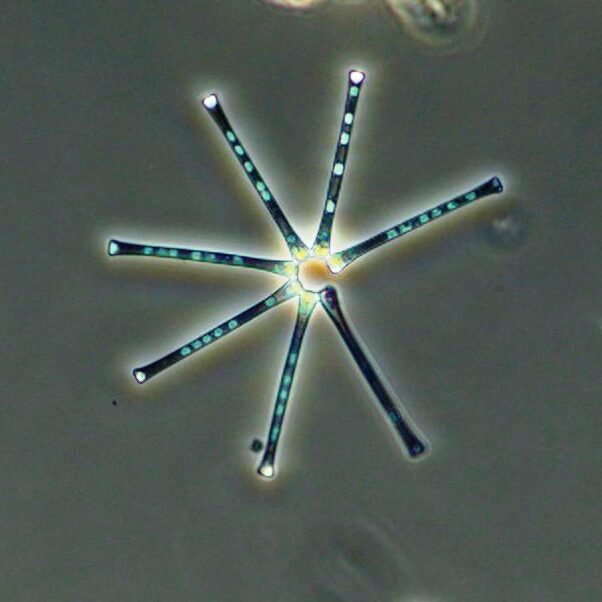The Narragansett Bay Commission’s state-of-the-science Water Quality Sciences Building houses the agency’s team of chemists, biologists, and environmental scientists. Staff collect and analyze over 100,000 water samples each year from both NBC treatment facilities, the NBC sewer system, the urban rivers, and Narragansett Bay. In addition, NBC scientists conduct research into emerging topics in clean water
Hot Topic in Clean Water: PFAS
PFAS (Per- and polyfluoroalkyl substances) are human-made chemicals that don’t break down easily. That’s because they are used to make products that resist grease, oil, stains, heat, and water. PFAS chemicals can be found in many substances like cleaning products, paints, food packaging, fire-fighting foams, and more. Humans and animals can be exposed to PFAS chemicals in the air, in the soil, and in water. This can result in PFAS in drinking water, food, the environment, and even in fish and other wildlife.
The NBC laboratory recently installed a PFAS analyzer. The PFAS system includes LC-MS/MS, extractors, evaporator, centrifuge, and nitrogen generator. This allows the NBC to conduct in-house PFAS analyses on all samples from both NBC wastewater treatment facilities, significant industrial users, and biosolids, in accordance with EPA’s established protocols. The NBC is the only clean water agency in Rhode Island with these advanced testing capabilities.
Scientists have yet to determine how long it takes for these chemicals to disappear. While it’s still unclear what the long-term effects of PFAS exposure are, high levels of PFAS may lead to health and environmental risks.
Conventional wastewater treatment does not effectively remove PFAS if it is discharged to the sewer system. Instead, PFAS may be passed through treatment to lakes, streams, and groundwater. It can also interfere with biosolids management from the treatment process. It is important to understand the sources and behaviors of PFAS compounds in NBC wastewater treatment process and to stay ahead of this upcoming regulatory issue.
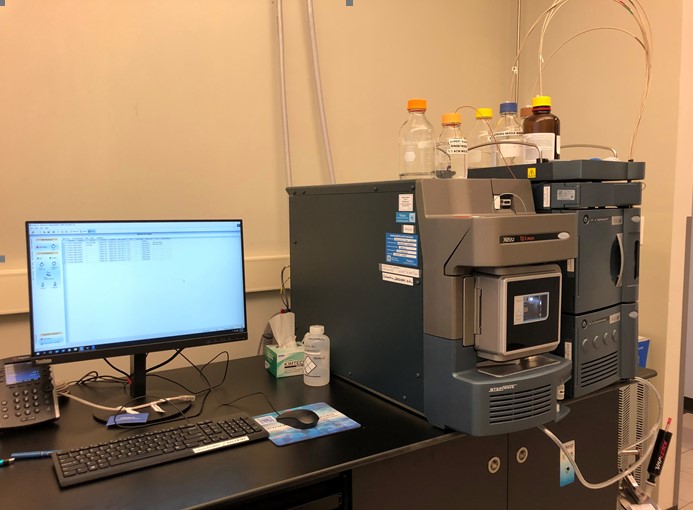
The NBC is the only clean water agency in Rhode Island with these advanced testing capabilities.
Bioassay Sea Urchin Study
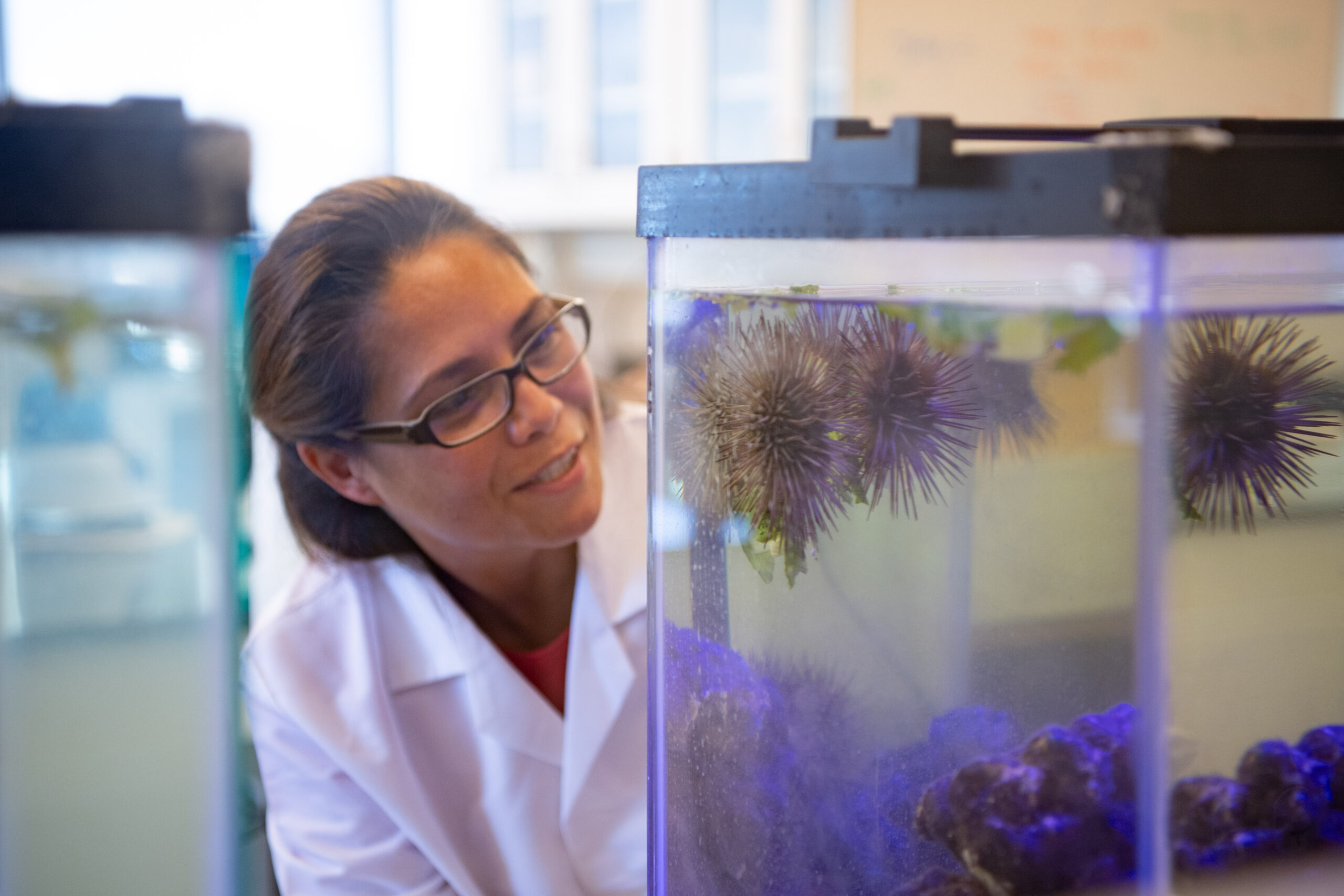
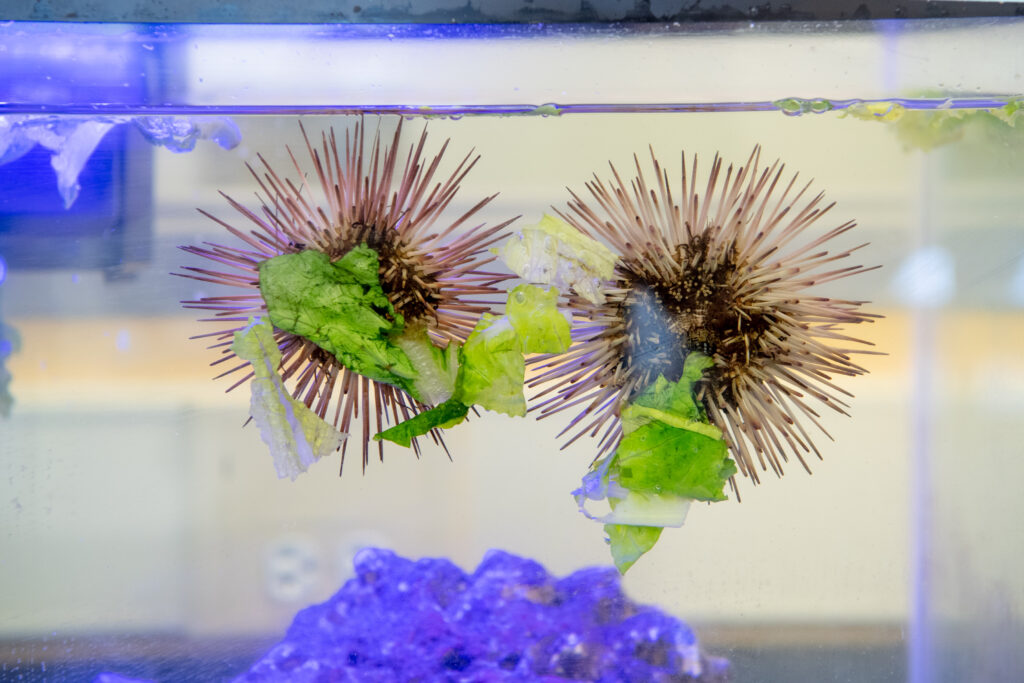
Whole effluent toxicity testing is performed in the laboratory using the purple sea urchin, Arbacia punctulata. This bioassay test method examines the effect of wastewater effluent on the reproduction of sea urchin gametes in a static system. Toxicity testing is used to monitor and evaluate effluents for their toxicity to biota and their impacts on receiving waters. The NBC Biology laboratory maintains urchin aquaria for this EPA regulated testing.
Laboratory Robotics: Meet the machines that help our scientists do their work
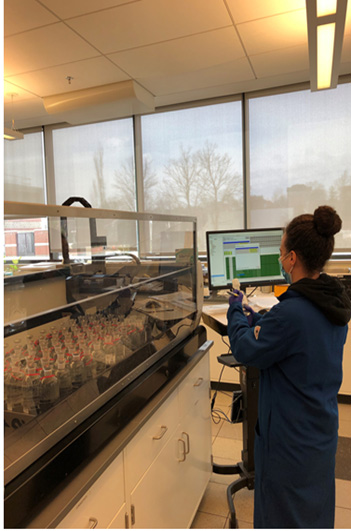
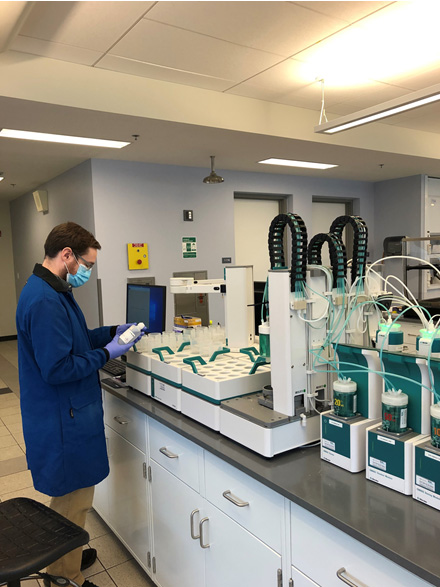
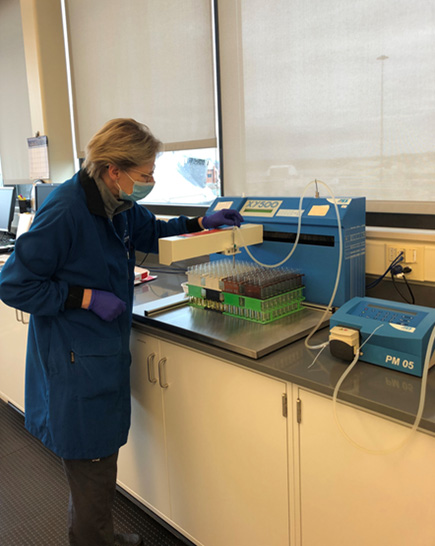
BOD Analyzer (above left): The Biochemical Oxygen Demand (BOD) analysis is one of the most important daily analyses for the NBC Laboratory. The Laboratory analyzes wastewater samples daily collected from various sampling locations at Fields Point and Bucklin Point facilities. The Skalar Robotic analyzer provides the automation for BOD method 5210. The Skalar BOD robot automates the addition of dilution water, nitrification inhibitor (ATU) and seed, sample homogenization, measurement of dissolved oxygen, probe/stirrer rinsing for the plant and SIU samples. The robot software calculates the BOD result according to the required regulation. Sample trays can be added during analysis runs and can handle up to 120 samples. The automation of the labor-intensive BOD analysis helps the operator save time and provides the required consistency for the application.
Alkalinity titrator (above center): The Metrohm Omnis auto titration system is designed to perform high precision alkalinity analyses. This titrator is used in NBC laboratory to measure the alkalinity of the samples collected at various sampling sites throughout the Field’s Point and Bucklin Point facilities. Alkalinity measurements are used in interpretation and control of the wastewater treatment process.
Media dispenser for bacterial testing (above right): The XY500 Robotic Module is designed to automate the filling of tubes or bottles when used in conjunction with the PM Precision Pump. The PMI Peristaltic Pump dispenses media into tubes and bottles with a high degree of accuracy. The filled tubes are used to conduct bacterial testing. This robotic system consistently provides accurate and repeatable dispensing. The media dispenser is very easy to program and to operate, significantly increasing Laboratory productivity. The NBC’s permitted limit for enterococci bacteria is 35 MPN/100 mL.
Microbe Library:
Get to know the microscopic organisms that help clean our water!
Spotlight: Rotifer
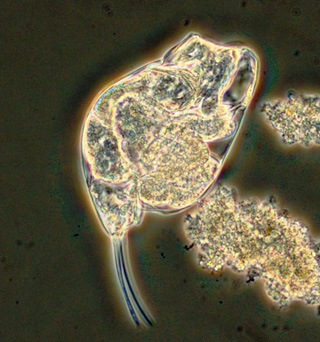
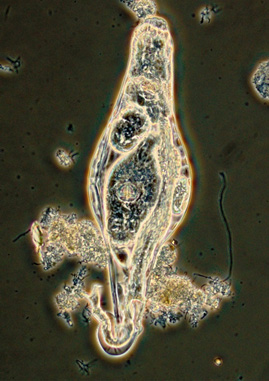
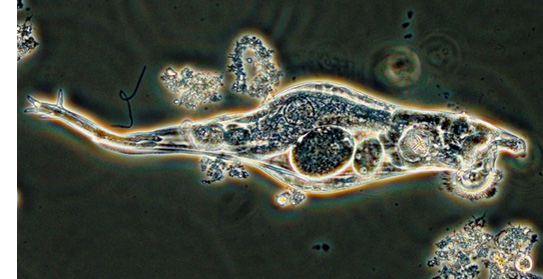
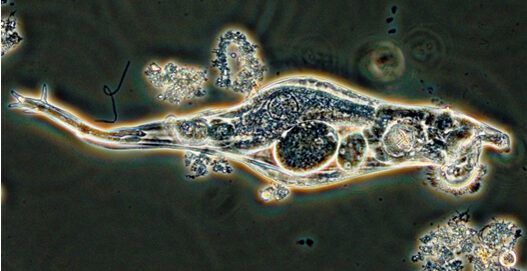
Rotifers are resident bugs in the activated sludge system. They are multi-cellular macro invertebrates. In the activated sludge system, the rotifers that are present are almost always pregnant females. See if you can find the offspring in these pictures. They proliferate under long sludge ages or high mean cell residence time and low food to microorganism ratio conditions. They grow well with excess dissolved oxygen environments and can indicate nitrification.

